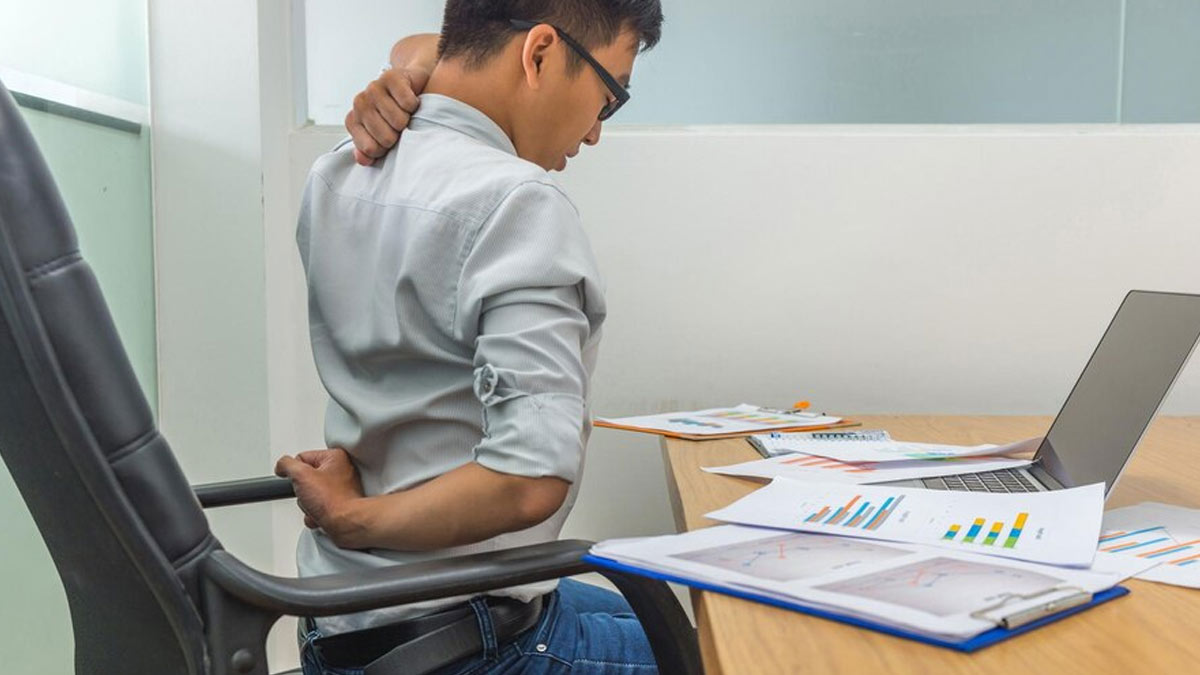
Office-going culture has made bad posture a prevalent issue, which is exacerbated by the long hours of sitting in one place, Sitting for extended periods, whether at a desk, in front of a computer, or during long commutes, can lead to discomfort and pain in various parts of the body. This can include back pain, neck stiffness, tight hips, and even headaches. Fortunately, there are simple exercises and stretches you can do to alleviate these pains and improve your overall comfort.
Table of Content:-
Seated Neck Stretches
You can easily do this exercise right at your desk. All you have to do is follow these two easy steps:
- Neck Tilt: Sit up straight and gently tilt your head towards one shoulder until you feel a stretch on the opposite side of your neck. Hold for 15-30 seconds and then switch sides.
- Neck Rotation: Slowly turn your head to one side, aiming to bring your chin over your shoulder. Hold for a few seconds, then rotate to the other side. Repeat a few times on each side.

Shoulder Rolls
Another body part that is a common location for pain is the shoulders. Here are two shoulder exercises you should try:
- Forward Rolls: Shrug your shoulders up towards your ears, then roll them forward in a circular motion. Repeat for 10-15 repetitions.
- Reverse Rolls: Roll your shoulders backwards in a circular motion, opening up your chest. Repeat for 10-15 repetitions.
Chest Opener Stretch
Clasp your hands behind your back and straighten your arms while gently lifting your chest. Hold this position for 15-30 seconds, feeling a stretch across your chest and shoulders.
Seated Spinal Twist
Sit tall in your chair and twist your upper body to one side, placing one hand on the back of your chair for support and the other hand on your thigh. Hold the twist for 15-30 seconds, then switch to the other side.
Hip Flexor Stretch
Stand up and take a step back with one foot, keeping your back leg straight and bending your front knee. Lower your hips slightly to feel a stretch in the front of your hip and thigh. Hold for 15-30 seconds, then switch legs.
Also Read: Expert Shares The Importance of Posture in Health and Wellbeing and Role of Physiotherapy

Seated Leg Extensions
While sitting, extend one leg straight out in front of you, keeping your foot flexed. Hold for a few seconds, then lower your leg back down. Repeat with the other leg. This exercise helps stretch your hamstrings and improve circulation in your legs.
Ankle Circles
Lift one foot off the ground and rotate your ankle in a circular motion, first clockwise and then counterclockwise. Switch to the other ankle and repeat the circles.
Deep Breathing Exercises
Sit comfortably and take slow, deep breaths, focusing on expanding your diaphragm and filling your lungs with air. Deep breathing can help relax your muscles and reduce stress.
Also Read: Yoga's Gluteal Boost: Top Postures For Firming and Strengthening Your Backside
Standing Desk Stretches
If you have access to a standing desk, take advantage of it by alternating between sitting and standing throughout the day. While standing, perform gentle stretches like calf raises, side bends, and overhead reaches to keep your body flexible.
Eye and Hand Exercises
To combat eye strain and wrist fatigue from computer use, practice eye exercises like blinking rapidly for a few seconds and focusing on distant objects. For your hands, perform wrist rotations and finger stretches to reduce tension.
Including these easy exercises in your daily routine can help you combat the effects of prolonged sitting and promote better posture, flexibility, and overall well-being. Remember to listen to your body and avoid any movements that cause pain or discomfort. If you experience chronic or severe pain, consult a healthcare professional for personalized advice and treatment.
Also watch this video
Read Next
National Exercise Day 2024: Benefits of Exercising for All Age Groups And Tips To Maintain A Routine
How we keep this article up to date:
We work with experts and keep a close eye on the latest in health and wellness. Whenever there is a new research or helpful information, we update our articles with accurate and useful advice.
Current Version